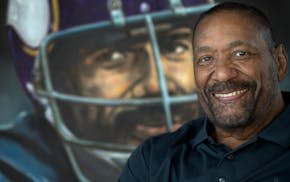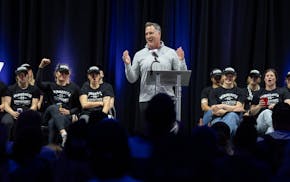Since the Minnesota Legislature saturated the Department of Natural Resources last month with what its commissioner called a "historic investment," the agency is busy prioritizing projects across divisions.
Parks and Trails has a lot of plans for its share of $308 million in new operating money to the DNR. The division will have almost $23 million more in its operating budget over the next two years for basic operations. In addition, the Legislature passed one-time funding that means, for fiscal years 2024 and 2025, an additional $2 million for state trail maintenance; $9 million from watercraft registration fee increases for a list of ramp, dock and safety improvements; and $1 million for outdoor recreation for underserved communities.
Top of mind is long-needed work on water recreation across the state like improving boat ramps, extending and rehabbing state trails and upgrading campgrounds.
"There is a significant backlog in outdoor recreation infrastructure," said Rachel Hopper, the division's visitor services and outreach manager.
Here is an overview of the division's current focus:
Improving boat ramps, docks and more
The first increase in boating registration fees on everything from pleasure boats to paddleboards in nearly a decade will help pay for some "high-high" priorities, Hopper said. With more than 800,000 registered boaters in a sport that generates billions of dollars annually in jobs and businesses, there is pressure on the system.
The fee increases, which take effect Jan. 1, 2024, will generate millions in revenue to help pay for a laundry list of needs. The framework:
- Add and repair 20 docks a year.
- Restore and add accessible portable toilets.
- Improve parking lots.
- Fix and replace 50 boat ramps a year.
The new revenue also will add boat-cleaning areas in the fight against invasive species; take measures to improve water quality by targeting stormwater runoff and erosion; add patrol hours and more boater safety outreach; and maintain public water access sites for longer periods, spring to fall.
"Our water recreation infrastructure was in dire need of some investment," Hopper said.
Building trails
Money from a mix of sources, including the bonding bill and Legacy Amendment appropriations, will improve some state trails — building new segments and planning others through land acquisition and design. Plans to connect Itasca State Park to the Heartland State Trail, which spans 49 miles between Park Rapids and Cass Lake, will proceed.
A glance at some other projects:
- Casey Jones (southwestern Minnesota, finish upgrades to Currie Loop)
- Gitchi-Gami (North Shore, complete Lutsen segment and continue overall development)
- Mills Town (Northfield to Dundas, Cannon Falls and Faribault sections, continue to develop)
Old campgrounds need new work
The substantial new funding will help the DNR work on day-to-day maintenance work, like painting and fixing buildings, at its 76 state parks and recreation areas. But now some large-scale projects can move forward, too, Hopper said. In a system where much of the park infrastructure was developed between the 1930s to 1960s, the needs are vast.
Here are some examples of both:
- Continue to develop Vermilion, the newest of the state parks.
- Rehabilitating campgrounds at places like Sibley State Park in New London, in central Minnesota.
- Redeveloping a group center at Flandrau State Park in New Ulm.
- Across the system, the DNR will look to upgrade or replace shower buildings, replace vault toilets and address wastewater and drinking water systems through the system.
"We are excited to get those changes on the ground," Hopper said.
From travel to jobs, the outdoor recreation economy generates more than $9 billion annually in the state.
Hopper said supporting that industry by retooling and restoring parks, trails and water recreation infrastructure is good economics.
"When we invest in these things and we can draw people out and connect them to nature, [their connection] reinvests in the state and comes back," she said.

Lynx dominate Mercury 88-65 to move to 8-0 behind Natisha Hiedeman's strong showing

Reusse: Jim Marshall belonged to us, and Minnesota loved him for it
Jim Marshall, NFL ironman and 'cornerstone of the Minnesota Vikings,' dies at age 87
